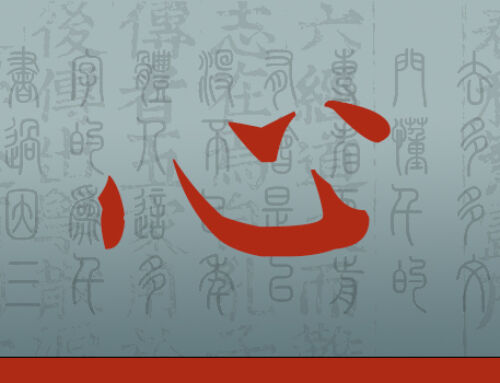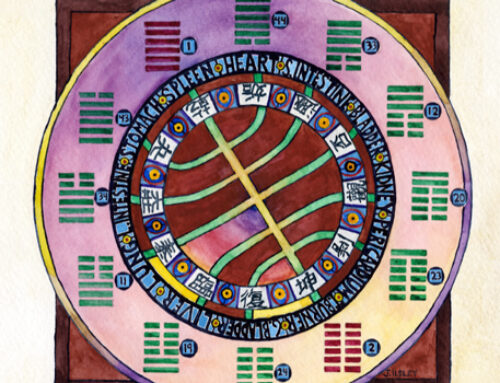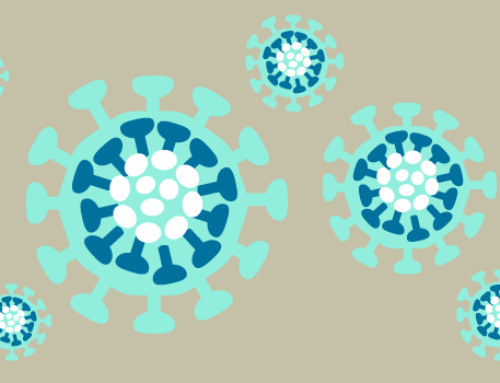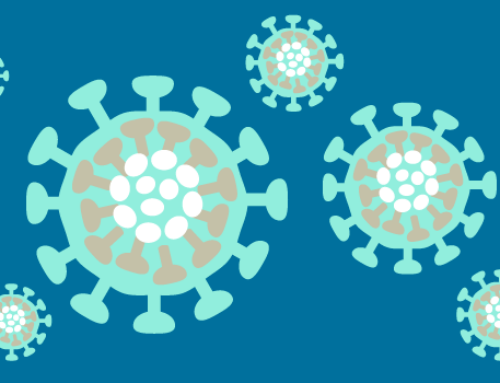Xue Yan, Zhang Wei, Xu Guihua, Chen Xiaorong, Lu Yunfei, Wang Zhenwei, Shi Kehua, Wu Huan, Yu Jian
Shanghai Journal of Traditional Chinese Medicine and Pharmacology
(Shanghai Zhongyiyao Zazhi)
Redacted and Translated by Heiner Fruehauf
National University of Natural Medicine,
College of Classical Chinese Medicine
MARCH 5, 2020
In the nomenclature of traditional Chinese medicine, “warm disease” (wenbing 温病) is the general term for all types of externally contracted diseases that exhibit heat characteristics in their symptom manifestations. This includes wind heat diseases of a highly contagious and epidemic nature. “Epidemic pestilence” (wenyi 瘟疫) is a subcategory of warm disease and the specific term for wind heat pathogens that transmit easily and can cause a pandemic. Based on our own clinical experience, after treating more than 100 confirmed cases of COVID-19, we are of the opinion that this epidemic should be classified as belonging to the traditional rubric of “damp febrile disease” (shiwen 濕温).
COVID-19 first erupted late in the year Ji-Hai (2019), which represents the warmest period in the entire 60-year Jia-Zi cycle designated by the traditional calendric system of the Heavenly Stems and Earthly Branches. Winter is normally characterized by cold weather, but this year’s winter was warm instead, creating an abnormal climate pattern that most likely aided the eruption of this disease. The “Upper Burner” chapter of the Treatise on the Differential Treatment of Warm Disease (Wenbing tiaobian) clearly states: “Winter is supposed to be cold, but if it turns out to be warm instead, then yang is not going into its customary state of storage and the populace will fall ill with warm diseases as a result.” The author Wu Tang (1758-1836) also remarked elsewhere: “Warm diseases can be differentiated into wind fevers (fengwen), heat fevers (wenre), and epidemic fevers (wenyi)… All pathogens that cause warm disease enter through the nose and mouth, and advance deeper and downward from there.” In similar fashion, the government’s standardized treatment approach has made it clear that this disease is transmitted via fine droplets originating from the respiratory tract. The disease first erupted in winter, moreover, and was caused by the novel coronavirus, a pathogen that exhibits highly contagious and pandemic qualities—just like in Wu Youke’s (1582-1652) classic definition of an epidemic: “Epidemic febrile diseases can occur during any season. The epidemic soaks up the pestilent qi between Heaven and Earth… and when it arrives, everyone who comes in contact with it—no matter whether old or young or weak or strong—will become infected.”
Toxicity (du), moreover, is a term for pathogenic influences of high severity. COVID-19 exhibits pathogenetic hallmarks that can be described as damp toxicity (shiduxie). The Ming dynasty scholar physician Ye Tianshi (1667-1747) once said: “In our region of Wu (approximately today’s Jiangsu Province near Shanghai) damp pathogenic influences are most common.” Shanghai is a city by the ocean; the Shanghainese love to eat food items that are rich, sweet and greasy; they work a lot and rest too little. Their overall lifestyle thus promotes the development of internal damp heat conditions, or at the very least a rapid turn toward dampness and stagnant heat once the virus has been contracted. At the same time, this winter brought significantly more rain than previous years–another factor for the development of damp pathogens. Fever School diagnostics, moreover, tend to favor examination of the tongue over the more traditional palpation of the pulse. A group of researchers examining the tongues of confirmed COVID-19 patients found that most specimens exhibited a tongue color that was red or dark red, with a tongue coating that was white and greasy, or yellow and greasy, or thick and yellow and greasy—all clear indicators of damp heat.[i] The incubation period for this virus, furthermore, can potentially extend to 14 days, much longer than for most other epidemic diseases. Once contracted, the low-grade fever period tends to last a long time, as well. These slow-moving characteristics are further indications for an etiology that involves damp pathogenic influences. On the other hand, since toxic epidemic influences are involved, the disease also exhibits the characteristics of rapid progression and severe late-stage development into heat toxins blocking the Lung (redu bifei) and internal blockage and external dissipation (neibi waituo).
Chapter 58 in the Classic of Difficulties (Nanjing) states: “There are five different types of epidemic cold disorders (shanghan), namely wind invasion (zhongfeng), cold injury (shanghan), damp febrile disease (shiwen), hot febrile disease (rebing) and warm febrile disease (wenbing); the suffering they cause are all different.” The Classic, therefore, discusses the categories of damp disease, warm disease and cold injury under the umbrella term of shanghan, which is here used in the broadest sense of the word. The 4th century Emergency Formulas to Keep Up Your Sleeve (Zhouhou beiji fang), furthermore, states in chapter 13 under the title “Prescripions for the Treatment of Cold Disorders, Seasonal Epidemics, and Warm Diseases” (Zhi shanghan shiqi wenbing fang): “Cold disorders (shanghan), seasonal afflictions (shixing), and warm epidemics (wenyi) are three different terms for the same type of disorder—their essential nature differs only slightly.” Several scholars have therefore pointed out the possibility that the disorder referred to as damp febrile disease (shiwen) during the 2nd century specifically refers to epidemics caused by damp pathogenic influences, with high contagion and high mortality characteristics.[ii] The 19th century publication, Classical Theories and Modern Interpretations on the Subject of Febrile Epidemic Diseases (Wenre jingwei), in the chapter entitled “Dr. Xue Shengbai’s Approach to Damp Febrile Diseases” (Xue Shengbai shire bing pian), asserts along the same lines: “The syndrome of damp febrile disease is characterized by the internal presence of epidemic pestilential pathogens.” Zhong Shaotao’s more recent textbook Teaching Materials for the Study of Fever School Theories (Wenbingxue jiangyi), published in 1931, weighs in further: “On can say that damp febrile disease…can be diagnosed as long as the presence of heat within damp or damp within heat can be detected—no matter during which season it occurs.” All of the above are indications that damp febrile disease is characterized by symptoms that combine dampness with heat.
There has been a lot of historic and contemporary discussion about the difference between the terms epidemic febrile disease (wen 瘟) and warm febrile disease (wen 溫). The 11th century dictionary A Collection of Rhymes (Jiyun) clearly states that the character wen 瘟specifically refers to epidemic afflictions: “瘟is pronounced like 溫, and means epidemic disease.” Coming back now to the coronavirus, which is highly contagious, dangerous and of pandemic potential, we feel that the term wen 瘟is best suited to designate the characteristics of COVID-19 delineated above. Hence our suggestion to designate this particular epidemic as a type of damp epidemic disease (shiwen 濕瘟).
The initial location of the disease is in the Lung, from where it can spread to the Membrane Source (moyuan) and Triple Warmer. The essential nature of the disease can thus be described as a complex fusion of damp (shi), toxicity (du), heat (re) and stagnation (yu). Symptoms of fever, cough and wheezing are most typical at first. Chapter 37 of the Magical Pivot (Lingshu) section of the Yellow Emperor’s Classic of Internal Medicine (Huangdi neijing) states: “Lung disease manifests in the form of wheezing and flared nostrils.” In chapter 47 the classic says furthermore: “If the Lung’s energy is too high, it will easily become compromised by counterflow issues with symptoms of shoulder-shaking cough.” As the disease progresses further, the damp toxins tend to stagnate and progress into smoldering heat, creating a situation where dampness, heat and toxicity intertwine and invade the Membrane Source. This development tends to cause stifling sensations in the chest, a noxious taste in the mouth, nausea and vomiting, etc. This is precisely the process that the Treatise on Epidemic Pestilence (Wenyi lun) described centuries ago: “The pathogenic influence enters through the nose and mouth and then embeds itself by ‘enveloping the Membrane Source’, as the Magical Pivot calls it.” Invasion by this type of damp and toxic epidemic pathogen, therefore, causes the internal development of stagnant heat, which can afflict the upper burner, spread to the middle burner, and even spill into the lower burner; thus producing the typical symptoms of high fever, choppy breathing, dry mouth, stuffy chest, agitation, inhibited urination, loose bowel movements and other signs of the pathogen’s systemic spread through all three burners.
The etiological progression of COVID-19 therefore tends to develop in the following manner: During the initial stage of infection patients exhibit symptoms of aversion to cold with fever, which most often turn into fever with dry cough, accompanied by a tongue color that is either pale red, red, or dark red, and a tongue coating that is either yellow and greasy, or white and greasy with the tendency to turn yellow and greasy. These symptoms all indicate a situation of damp toxins depressing the Lung (shidu yufei). Afterwards, most patients present with dryness of mouth and throat, red or dark red tongue tip, with a tongue coating that is both greasy and cracked open by lack of fluids. All of these symptoms indicate a development where the damp toxins have already transformed into heat and dryness. The 2nd stage of the disease, therefore, marks a situation where damp toxicity is still present and where damp stagnation now produces heat. At this juncture the etiological influences of dampness, heat and toxicity combine and spread through the entire body by adhering to the Membrane Source and the Triple Burner. During the 3rd and most severe stage, the dampness, toxicity and heat then enter into the nutritive layer (ying) where they cause pathological movement and depletion of the Blood. At this time these three thus further combine with the element of Blood stagnation (yu), with the possibility of advancing the disease to the life-threatening stage of internal blockage and external dissipation (neibi waituo). During the recovery stage, patients most often exhibit symptoms indicating dual deficiency of qi and yin (qi yin liangxu). Wu Youke already stated four centuries ago in the “Damage Repair” (Sunfu) chapter of his Treatise on Epidemic Pestilence that “these pathogens will first and foremost injure the qi.” It is a given that the damp and toxic nature of this disease will do certain damage to the overall energy of an individual. The toxic heat, moreover, will harm the Lung by damaging the qi and yin of this organ system. In addition, it is likely that extended and heavy use of herbs that disinhibit damp can damage physiological fluids and cause yin deficiency. The typical application of intravenous fluids will damage Spleen yang. These are the main reasons why most patients during the recovery stage exhibit signs of qi and yin deficiency of the Lung and Spleen (Stomach).
Endnotes
[i] See Lu Yunfei, Yang Zongguo, Wang Mei, et. al., „Wushili xinxing guanzhuang bingdu ganran de feiyan huanzhe zhongyi linchuang tezheng fenxi“ (An Analysis of the Clinical Characteristics of Fifty COVID-19 Cases from a Chinese Medicine Perspective), Shanghai Zhongyiyao Daxue Xuebao (February 18, 2020).
[ii] See Zhang Meng, Wang Xiaomei, Liu Qing, et.al.: „Shiwen gainian bianxi” (A Differential Analysis of the Concept of Damp Febrile Disease), in Zhongyiyao xuebao 45/3 (2015), p. 1-4.









[…] https://classicalchinesemedicine.org/dampness-epidemic-exploring-clinical-characteristics-covid-19-s… […]
[…] conditions is important to pay attention to as, from a Chinese medicine, perspective COVID- 19 is a warm disease with wind heat pathogens that transmit easily[1]. Finally, we know that increased environmental instability contribute to increased stress, which […]
[…] conditions is important to pay attention to as, from a Chinese medicine, perspective COVID- 19 is a warm disease with wind heat pathogens that transmit easily[1]. Finally, we know that increased environmental instability contribute to increased stress, which […]
[…] predominant pathological factor related to COVID-19 from the perspective of Chinese medicine is damp phlegm. This is a particularly thick and tenacious category of phlegm that can result in a cough that is […]